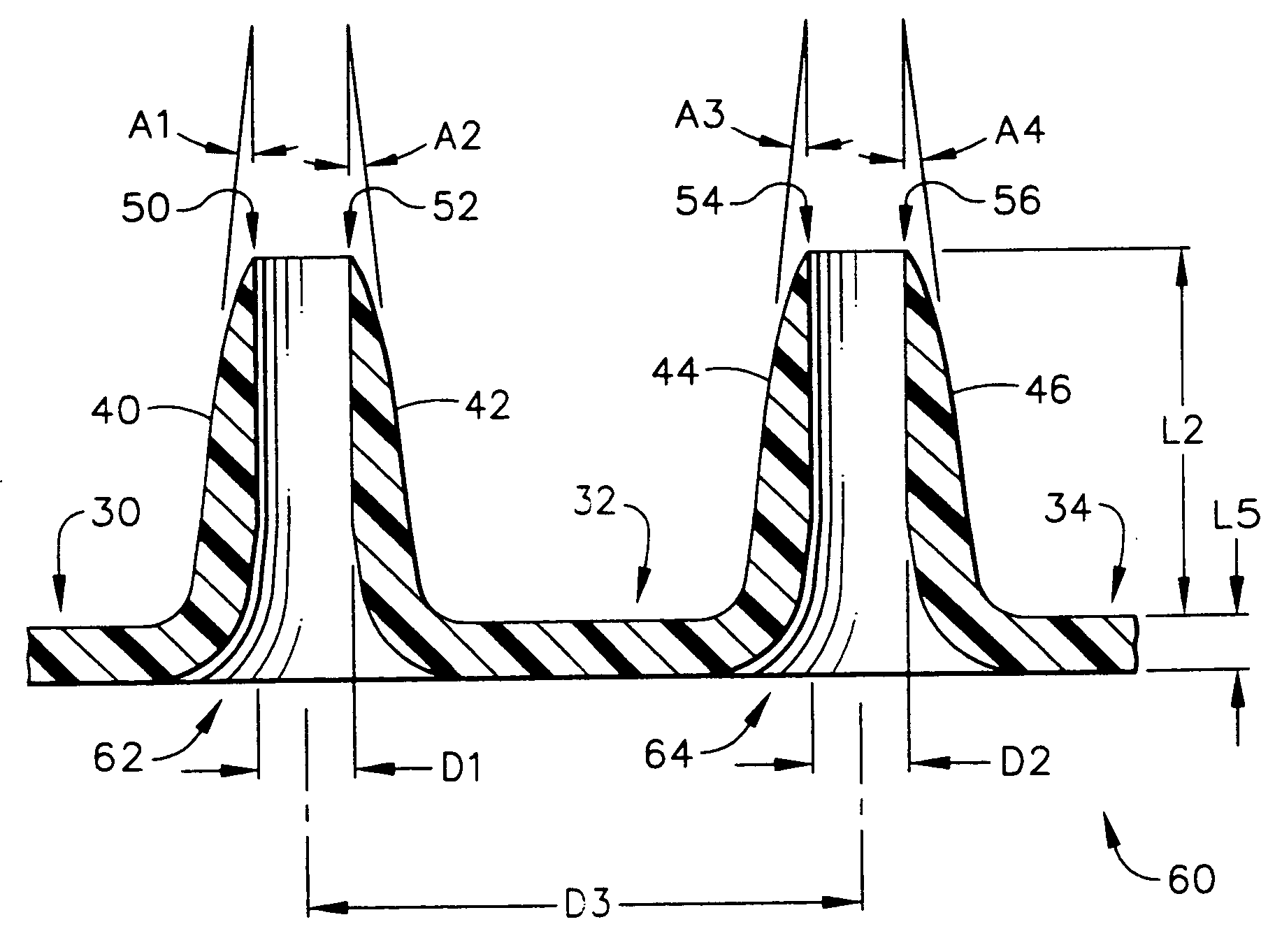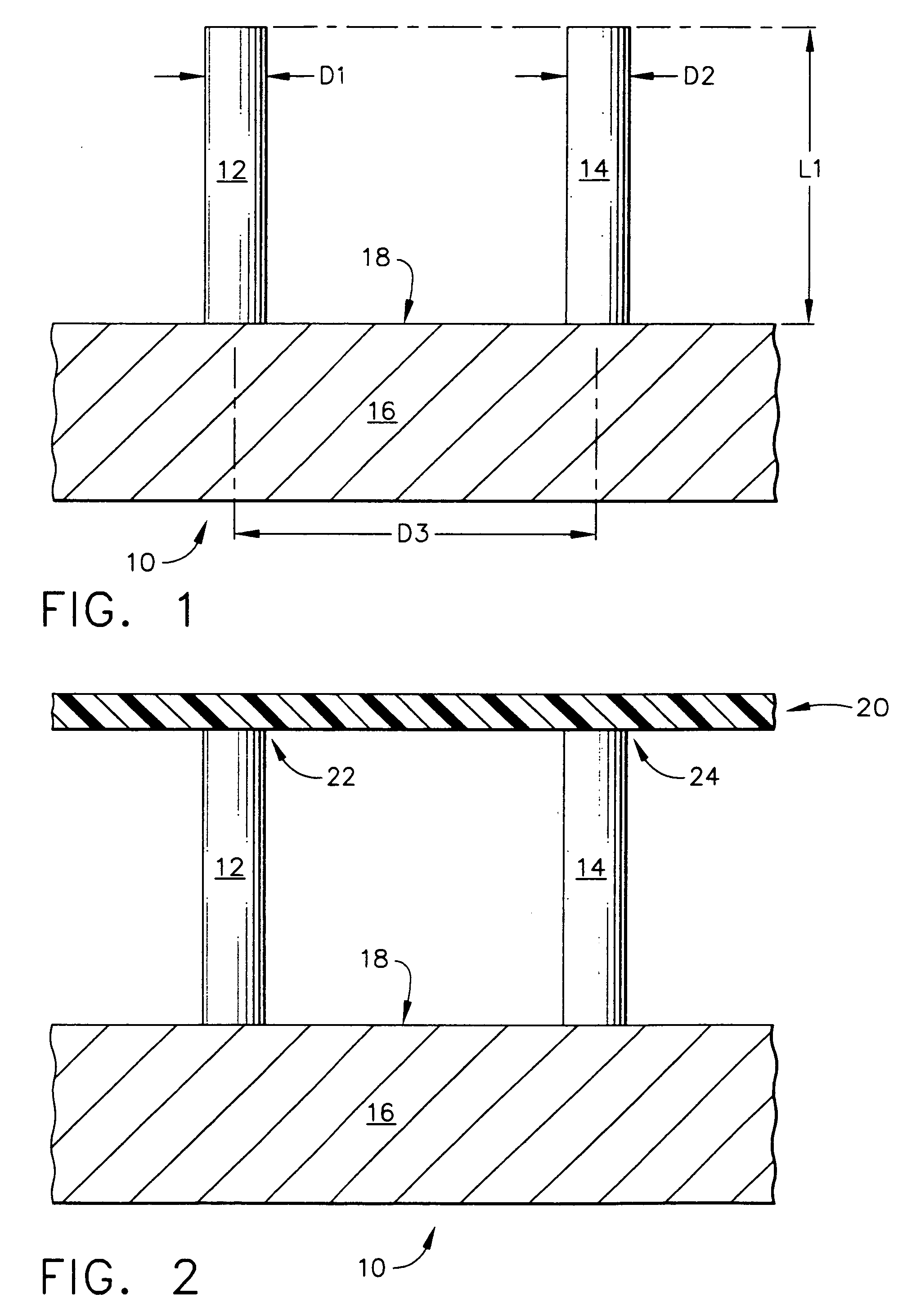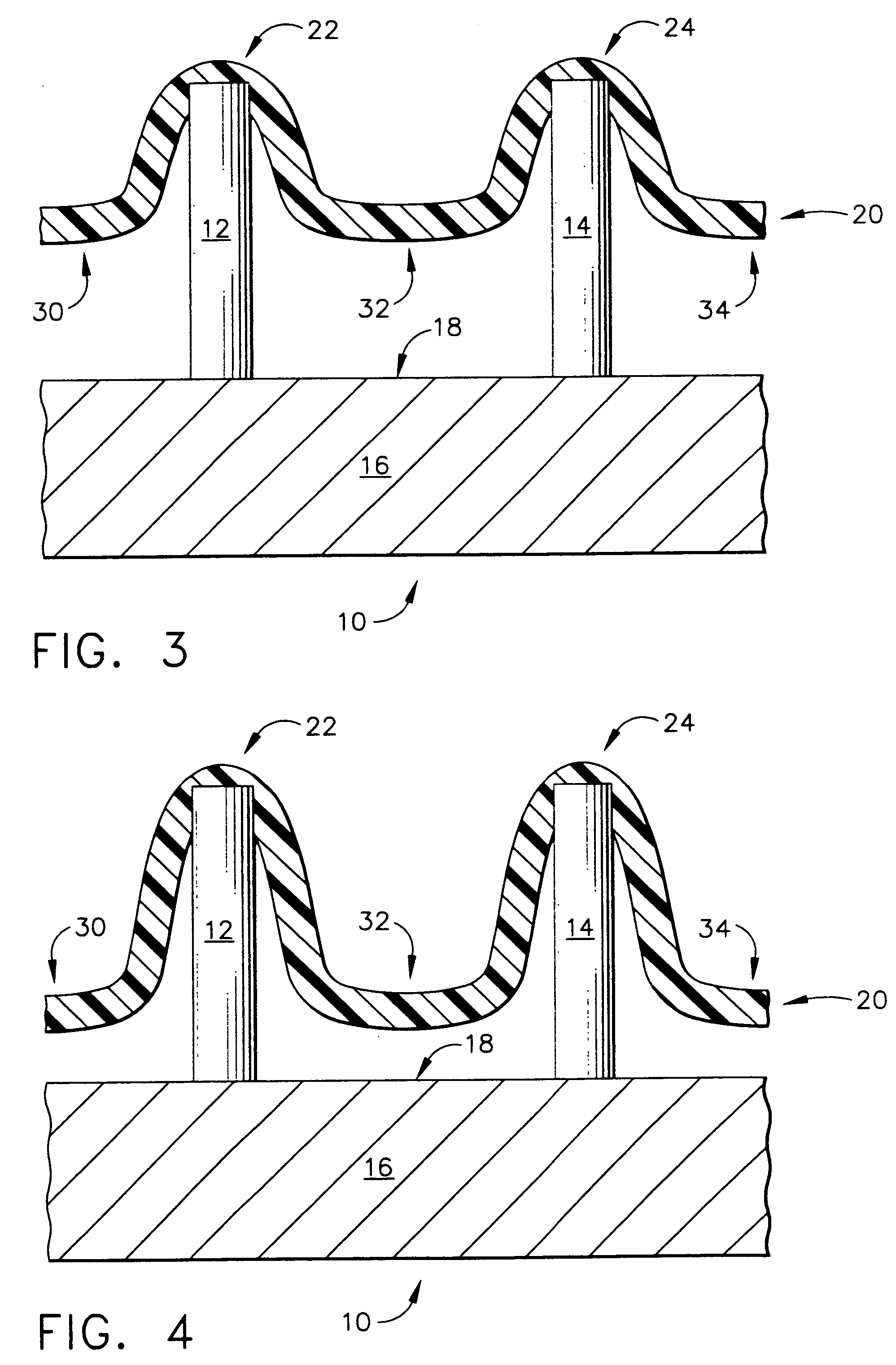Intracutaneous microneedle array apparatus
a microneedle array and apparatus technology, applied in the field of medical devices, can solve the problems of small fraction of topically applied drugs entering the skin, poor efficiency, skin irritation, etc., and achieve the effects of facilitating biological fluid sampling, less expensive, and reducing the number of microneedle arrays
- Summary
- Abstract
- Description
- Claims
- Application Information
AI Technical Summary
Benefits of technology
Problems solved by technology
Method used
Image
Examples
second embodiment
[0103]FIG. 7 depicts a top mold-half, generally designated by the reference numeral 110, of the present invention in which the manufacturing method for creating an array of hollow microneedles is performed by a micromolding procedure. The top mold-half 110 includes two “microholes” that have sloped side walls, designated by the reference numerals 112 and 114 for the left-hand microhole 113, and by the reference numerals 116 and 118 for the right-hand microhole 117. The microholes 113 and 117 have a vertical (in FIG. 7) dimension referred to herein as a distance “L11”. Microholes 113 and 117 correspond to a pair of micropillars 122 and 124 that are part of a bottom mold-half, generally designated by the reference number 120, and illustrated in FIG. 8.
[0104] Referring back to FIG. 7, the sloped side walls of the microhole 113 are depicted by the angles “A11” and “A12,” with respect to the vertical. The side walls of microhole 117 are also sloped with respect to the vertical, as illust...
embodiment 550
[0161] An alternative embodiment 550 is depicted in FIG. 24, in which the microneedles 580 are solid, rather than hollow. A fluid-filled chamber 560 is provided and also comprises hydrogel filled with glucose oxidase. The chamber 560 is made of a bottom wall 562 that has openings proximal to the individual microneedles 580, in which these openings are designated by the reference numeral 585. Chamber 560 also includes side walls 564 and 566, as well as electrodes 570, 572, and 575.
[0162] The electrode 575 is constructed as part of the bioelectrochemical sensor. The electrodes 570 and 572 act as the electrophoretic electrodes, acting either as an anode or cathode to set up an electric current through the skin which flows to a remotely-attached (to the skin) electrode (e.g., electrode assembly 555, viewed on FIG. 26).
[0163] As in the sensor 500 of FIG. 23, the transport rate of fluids is enhanced by not only the piercing effect of the microneedles 580, but also the electric field indu...
embodiment 555
[0169] An alternative embodiment 555 is depicted in FIG. 26, in which the microneedles 581 are solid, rather than hollow. A fluid chamber 561 is provided and preferably is filled with hydrogel (which is not electrically charged). Chamber 561 is made of a bottom wall 563 that has openings proximal to the individual microneedles 581, in which these openings are designated by the reference numeral 586. Chamber 561 also includes side walls 565 and 567, as well as a top (or ceiling) electrode 576. The electrode 576 may act as a cathode, for example, in a situation where electrode assembly 555 is being used in conjunction with a body-fluid sensor, such as sensor assembly 550 viewed on FIG. 24, in which its electrodes 570 and 572 may act, for example, as an anode. The height “L57” of fluid chamber 561 could be any reasonable dimension that is large enough to hold a sufficient volume of the hydrogel to enhance the fluid flow via the electric field between the respective anode and cathode of...
PUM
 Login to View More
Login to View More Abstract
Description
Claims
Application Information
 Login to View More
Login to View More - R&D
- Intellectual Property
- Life Sciences
- Materials
- Tech Scout
- Unparalleled Data Quality
- Higher Quality Content
- 60% Fewer Hallucinations
Browse by: Latest US Patents, China's latest patents, Technical Efficacy Thesaurus, Application Domain, Technology Topic, Popular Technical Reports.
© 2025 PatSnap. All rights reserved.Legal|Privacy policy|Modern Slavery Act Transparency Statement|Sitemap|About US| Contact US: help@patsnap.com



